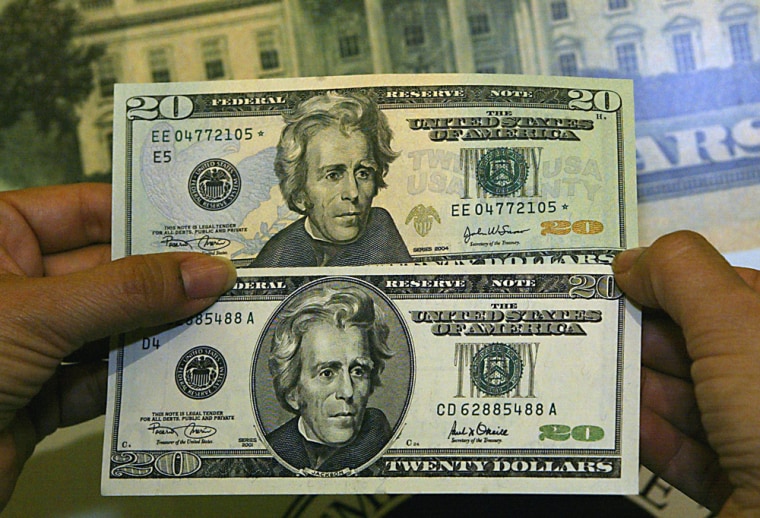Staying one step ahead of counterfeiters is no easy task in a world where U.S. money circulates everywhere and copying machines get better and better.
The government has added new colors to the greenback in recent years, along with watermarks, changes in printing and other steps to protect the money.
The National Research Council on Monday issued a series of suggestions for future funds, ranging from differing paper to special inks and dyes to high-pressure printing.
The report, “A Path to the Next Generation of U.S. Banknotes,” was prepared at the request of the Bureau of Engraving and Printing, which is in charge of producing the country’s paper money.
With improving copiers, the report estimated that within 10 years even low-skill amateurs will be able to duplicate almost any two-dimensional image. At that point, the council said, the “battle of the printed image” will be lost to the counterfeiters.
So, steps need to be taken that go beyond mere printing.
Currently an estimated $720 billion in American paper money is in circulation worldwide, an amount that is growing by 6.5 percent annually, the report said.
The study estimated that five out of every million bills are fake, with the rate as high as 30 per million for $100 bills. While foreign counterfeiters prefer $100 bills, domestic ones concentrate on $20 bills, the study added.
In addition, the Internet is a growing threat, allowing counterfeiters to exchange information and to find sources of paper and equipment.
To overcome this, the report said, new features need to be hard to reproduce while still being relatively easy for the public and cash handlers to observe.
In addition, the material must be “durable during normal use and able to survive folding, crumpling and occasional laundering.”
Safety suggesstions
Possible changes suggested by the Council — an arm of the National Academy of Sciences — included:
- Varying the feel of the paper or other material the banknote is printed on, perhaps by using small fibers or tiny holes.
- Use of plastic for low-denomination notes.
- Microprinting and embedding a small, complex lens in the bill. By folding the bill the lens could be used to view the microimages.
- Use of print that reflects light in different wavelengths or which can only be seen by a polarized lens.
- Use of subtle shadings in color.
- Use of complex starburst patterns that copiers cannot reproduce.
- Use of inks that appear to be the same color when seen in one wavelength but are different colors in another light.
- Printing with inks that change color according to temperature.
- Placing part of an image on each side of a note, so that the whole image can be seen only when the two partial images are perfectly aligned and held up to light.
- Putting windows in the paper of different shapes and locations for each denomination. If the windows were progressively smaller for larger-value notes, they would complicate bleaching of low-value bills for use as counterfeit high-value ones.
The committee that prepared the report also noted that an even greater threat may be posed by electronic funds transfer. While that is beyond the scope of the current study, the committee said, it is a subject that should be examined in an effort to protect the economy.
The National Academy of Sciences is an independent organization chartered by Congress to advise the government on scientific matters.
